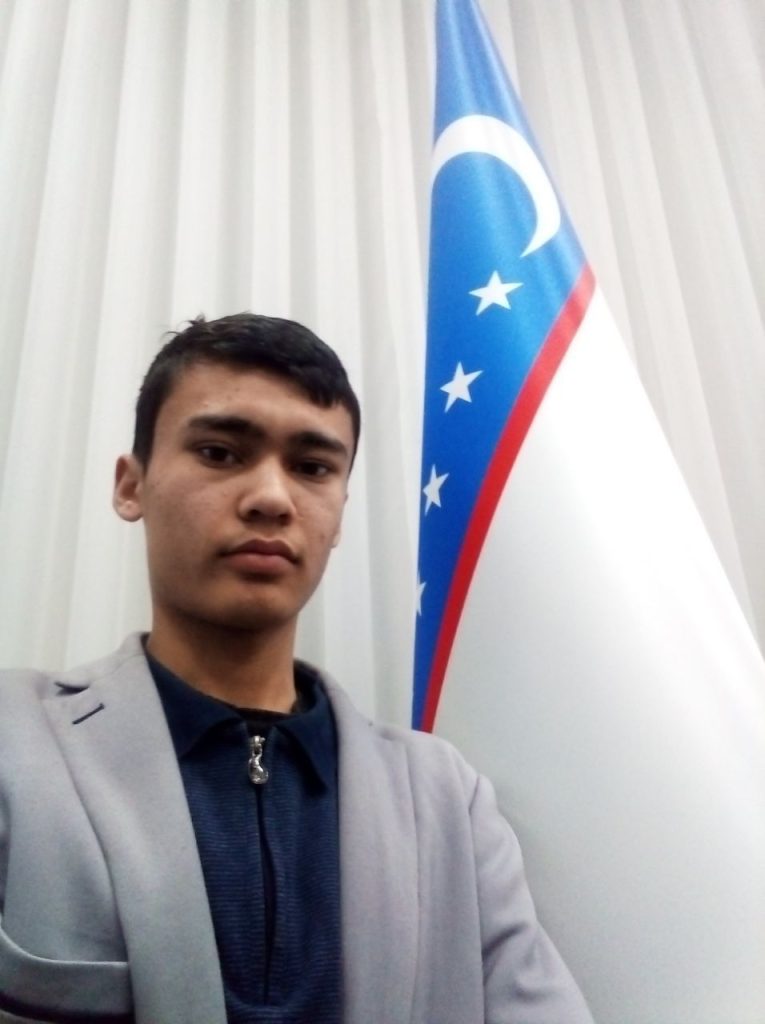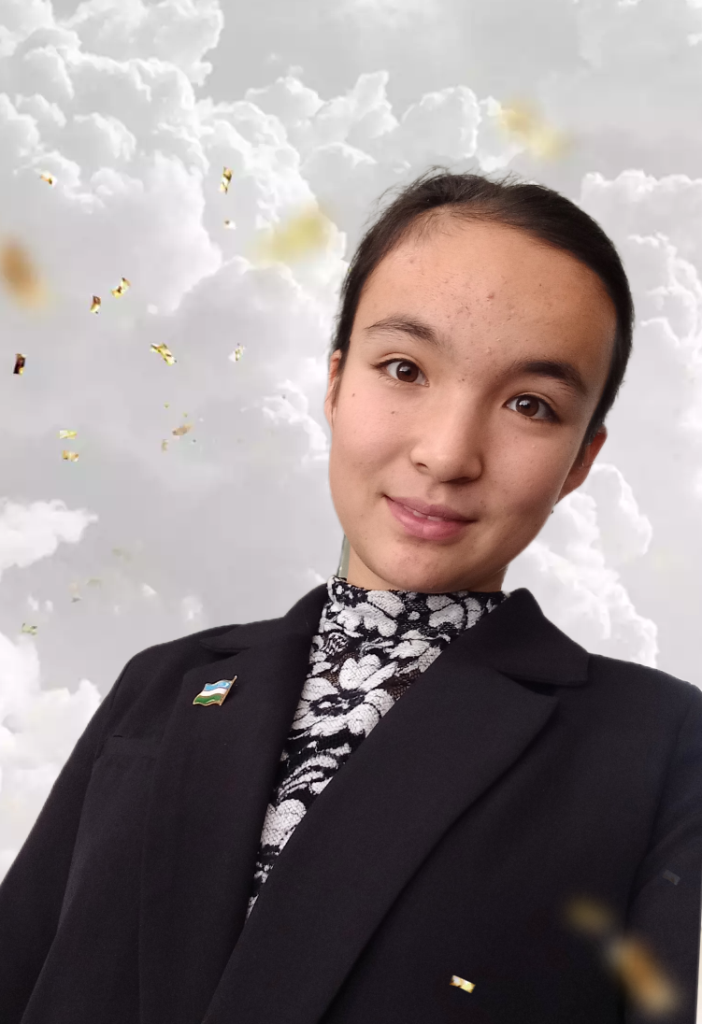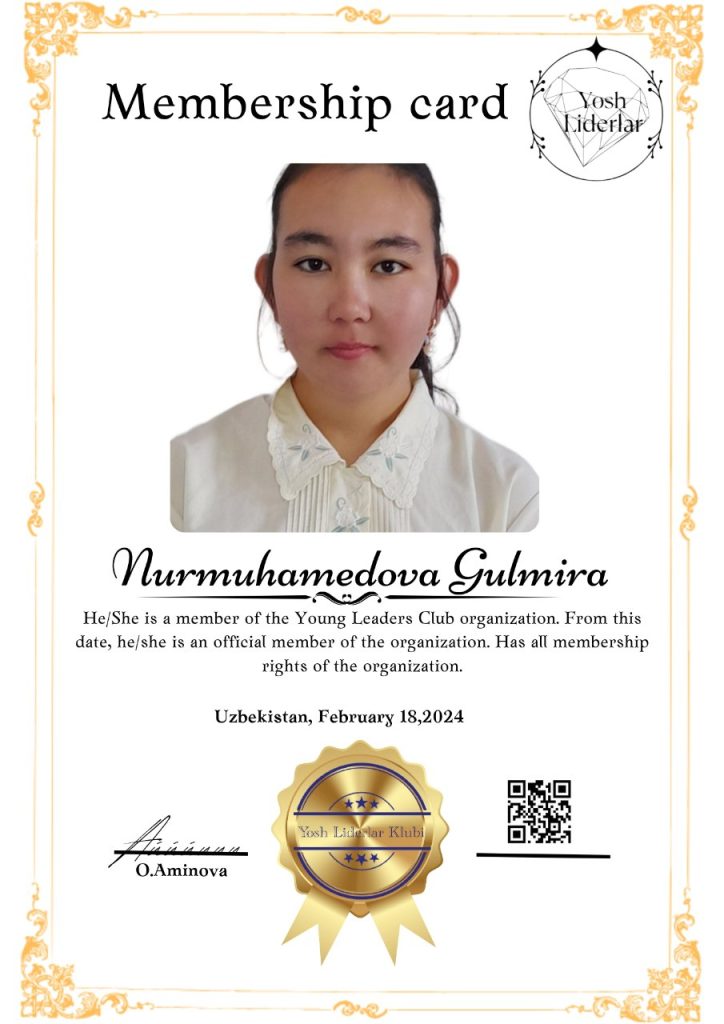HEAVENLY LOVE In the garden of your love, I find heaven. You never let me in times of pain. Patiently, you wait for me unwavering, Not eating until I return again. Your smile eliminates my life's treasures, The most beautiful and esteemed one. You are the sweetest flower in my soul, Forever basking in your love's swarm sun. Mother, I didn't do anything for you. I never thought of you, I'm a thoughtless girl. I smiled, I played and I walked along like a carefree lady, without paying attention to you. With pride and arrogance, I call myself a poet, Several lines not rhyming, lacking meaning Most of them wrapped in colorless paint, Because I never wrote a poem to praise you. Yes, I am a sinner, I know this well. Just to speck, not worth a penny. Mother, forgive your daughter's wrongdoings. When did I worship you and your beautiful face? Honey, "Your presence is my blessing", you always say. Mother, it's time to go and I will do my responsibility. Of course, I will do my filial duty. I will bow down to you in Makkah as well. Sarvinoz Giyasova was born on April 12, 2007, in the Bukhara region of the Republic of Uzbekistan. She discovered a love for literature at a young age through the stories and poems shared by her grandfather. When she was between 9 and 10 years old, she began writing her own poems. Her poems have been published multiple times in the "Gidjduvan" newspaper, and she has also achieved recognition for her work by winning prestigious awards in "Besh Tashabbus" contests. Currently, Sarvinoz is actively involved as a member and ambassador of various organizations. In addition to her literature pursuits, she is dedicated to expanding her knowledge by studying mathematics, mastering three different languages, and honing her skills in writing and translating poems in her free time. Alongside these endeavors, she has been an active participant in Judo clubs and National Olympiads up until the age of 14.
Essay from Gulsanam Qurbonova

MY MOTHER My mother, a remarkable embodiment of human kindness, is someone I envision as the architect of my being. She was a person filled with a delightful spirit, resilience, and love. With profound grace, she nurtured her family, shaping not just my existence but also the world around her. Her life was fascinating from many perspectives. A highly skilled individual, she faced family challenges and strived to be a beacon of goodness. She bestowed upon me a profound sense of appreciation for family bonds, enriching her role as a loving wife and nurturing mother. Her life was a mosaic of diverse experiences. She was an exceptionally compassionate person, always extending a helping hand and fostering a strong connection with those close to her. Her ability to empathize and approach life with love and understanding played a pivotal role in fortifying family ties. My mother, a source of wisdom and morality, instilled in us the values of literature, knowledge, and social justice. Her courage and determination to prepare for the future were matched only by her gratitude for her capabilities. Her ambitions and dedication to pursue goals inspired me to be a conscientious and hardworking individual. Her creation, both in the intellectual and societal sense, was evident in her fundamental role in developing harmony within our family and community. Her experiences and knowledge showcased the importance of swift resolution of issues, efficient time management, and extending help to others. Her birth, her intellectual and social guidance, and her unwavering support for family and friends revealed her paramount influence. Her wisdom and accomplishments contributed significantly to the growth of her family, reflecting her essential role in bridging relationships. My mother's commitment to justice and fairness in managing family resources showcased her compassionate and just approach. Her ability to maintain a balanced and respectful relationship with her family demonstrated the crucial role she played in fostering unity. Her upbringing in family values and justice became even more apparent in times of adversity, where her resilience and ability to handle challenges were commendable. Her family's respect for her, coupled with the understanding of family dynamics and how to navigate difficult situations, was inspiring. Her family, bonded by love and respect, created an atmosphere of warmth and compassion. The trials she faced became a testament to her strength and determination, and her ability to balance family discipline with love and understanding left an indelible mark. My mother, with her wealth of experience and knowledge, continually engaged in meaningful conversations, and her relationships with family members and close friends showcased the importance of open communication and mutual respect. In her, I witnessed a harmonious coexistence of sensitivity and justice, providing a strong foundation for interpersonal relationships. Her family members, connected by respect and love, demonstrated the significance of trust and support. In conclusion, my mother's influence on my life is immeasurable. Her unique words, numerous acts of patience, and expressions of love have created a reservoir of gratitude within me. I am thankful for her guidance, love, and the myriad lessons she taught me, shaping my character and influencing the person I am today.
Essay from Akramov (needs to be May 1)

Dream, goal and success
We know that everyone has a dream. This dream will not be achieved without difficulty. In order for a dream not to remain a dream, it is necessary to strive, search, act, and work. In order for you to do what you love, you need to complete 3 steps and follow these three paths. The first is to choose a dream, the second is to turn a dream into a goal, and the third is to achieve success tirelessly on the way to the goal. First, you need to dream of a job that you like and enjoy. For this dream, you need to flow continuously. In the second case, in order to make your chosen dream come true, you need to set a deadline and do what you want to do within that period. is the third stage road. That is, as long as you shoot from the first and second stages, you will find the fruits of your labor. This success will change your life. Money may also increase your knowledge. I also needed time to understand these words. But Marahimov Bahodir Olimovich, the education teacher of the Margilan city specialized school, taught this to us, the students, the early days of the country. As long as there are such teachers, the country will not stop blooming.
Akramov is the son of Gulomnazar Kamoliddin. He was born on April 10, 2008 in Okhunboboyev (now Koshtepa) district. The pursuit of knowledge has finally paid off. The artist has tested, applied, worked and searched for many of his knowledge in life, so now he studies where he wants. He is in secondary school No. 30 in Koshtepa district, then in former IDUMI 1 (now Koshtepa district specialized school), and now he is a 9th “Blue” grade student of Margilan city specialized school.
Essay from Adkhamova Laylo Akmaljon

Always have confidence before you start anything, confidence plays an important role in the first place. You should always believe in the great success that follows your faith. Trust is the first priority in communication with people. No one will look at a person who has lost faith! Friends Lovers And of course, first of all, there should be trust between partners. What should we understand when we say trust? For example Trust is a big mountain, it stands strong for years, but if there is a strong earthquake once, it is also easy, so try not to lose your faith. When will a person realize that he is a person, of course, when everyone trusts him! First of all, protect your trust, I believe in you! You will definitely do it all Act as if failure is impossible! This is a test for you, you have the strength to continue! I believe! And of course I love you ♡
Story from Shahnoza Ochildiyeva

Goodness
The moment when the sky pours its pain on the earth. Raindrops fall in buckets. If there was a happy person who is grateful for his/her life, he/ she would have already danced under this pleasant rain. Then, he would even smile with satisfaction, looking at his wet dress. But not everyone is happy with the sensational visit of the rain, especially a woman who was standing at the old roadside station with a child in her arms. She was always worried about her child, she didn’t even show that she was thinking about herself. She had been sitting here for an hour and was thinking about today’s difficult day.
The city was still asleep when the bus reached the city center in the early morning. This young woman, who brought her child to the hospital, searched for a hospital on the outskirts of the city for a long time. Three or four months after the birth of her son, the child was diagnosed with an illness. Even if her son is 9 years old now, he could not walk. During these nine years, there was no hospital that the woman did not go to, no doctor that did not try to treat the baby.
All the doctors gave hope and said that he would be recovered. The woman was strong enough not to give up hope, even if she did not see any changes in her son after long treatments. When she heard about a new doctor through an acquaintance who lives in another region, she left without thinking. The wages she was saving for his son came back to him. When she reached the hospital, the city have already woke up. But people wait in line for weeks, sometimes even months for this professor. Of course, the woman did not know this. She did not know what to do.
Now, when she went to the hospital yard, the woman on duty ran after her and said that a patient had called a while ago to say that they can’t come because of some reasons. The nurse gave the woman their turn. The woman was so happy that she thanked again and again. They had to wait in the yard until noon, but the woman was grateful for that. She sat down with her son on one of the beautiful seats in the yard. She whispered songs to her son and caressed him with kisses. At that moment, she saw a couple sitting on a seat a little further away, and her heart ached. The memories of the past came back to her scratching her tongue. Her childhood that playing and laughing at school, her sweet dreams, her unusual plans after graduation, her mother’s friend’s son who was chosen bride for her and her beautiful life after the wedding, her happiness at the birth of her son, and her little baby’s illness.
The pains that she heard, one after another passed before her eyes. Finally, the memories stopped in front of the emotionless, cold face of her husband. This face is very familiar to her. She knows him better than she knows her own name. Because he was a father who tried to treat his son more or less when he heard about his illness, but when it didn’t work, he left his son and had another family without shame! After the past events, the woman used to face this image twenty or thirty times a day, pouring out all her pain, anger and hatred. Even now, she was angry, her heart hurt so much that tears came out of her eyes. And she talked with her husband in her imaginations: ” You have acted unscrupulously and unwillingly. You did not feel sorry for your son. How did your heart get used to leaving me alone in these difficult ways? Oh, you didn’t have a heart, did you?! What kind of father have you become… You have no conscience!” At that moment, it was their turn and her anger was instantly crushed like dust on the dirt road where a heavy truck had passed by. All his pains went away again.
This time, as always, the professor examined her son for a long time. Then he gave a very beautiful hope and confidence. He followed by saying that she would prepare some documents and then she would have to stay for a week for treatment. The woman prepared all the documents and various analyzes of her son while running from here to there in a city she did not know well. It’s late. She rushed into the hospital. The nurse on duty accepted the documents and said calmly that they would start the treatment from Monday.
Only then, the woman’s mind was struck by the question of how they would get home at such a late hour. If it was possible to stay in the hospital now, she was ready to stay. But it is not possible. Impossible. When the woman reached the station with a heavy bag on one shoulder and her nine-year-old disabled son in her hand, the bus had already left and there were no taxis. It’s a 5-hour drive from the city till her home. She couldn’t afford to hire a car. So the woman realized that she had to find a place to stay. She even knocked on several gates. They did not regret it. Then the rain started and the woman took refuge at this station. Now, while sitting at the station, she asked a true way and help from the God! God never left him alone. He always showed a good path to this strong and kind-hearted mother. He used it now!
A young couple passed by here, having a nice conversation under an umbrella. After walking for a while, they saw the woman and came back to her. When they found out about the mother’s condition, they were very sorry. The young man took the mother’s son, and the girl took her luggage and led the woman behind them. After walking for five or ten minutes, they knocked on a small gate. An old woman opened the door. She opened it and immediately invited them to go in after seeing the guests. When she saw that they were crushed in the rain, she ran in all directions.
This old woman was still the grandmother of the young couple. The young man, who was orphaned by his parents, grew up with his grandmother. She got married recently. They are such open-minded and good people that they immediately became dear to the woman and her son. A beautiful table was prepared for the guests. They had a sincere conversation. Hearing the woman’s worries, the old grandmother prayed to God for healing for the boy. Hearing that the woman would return home the next day, the grandmother stubbornly persuaded her to stay here. While the woman was lying on the bad while watching the rain from the window in the warm house, she kept thanking the Allah.
“All people in this world should be friends and dear to each other. Because we are all created by the same God. We all had the same beginning and the same destination. There is no stranger in this life! There are many good people! In many worlds. She showed me another one that I created today. Thank you”- the woman thought. Her son had already fell asleep. Mother looked at his curled eyelashes and said: “Be such this young man in the future, my dear son, people will be happy because of you!” Let those who are in dire straits hope. Get strength. Because of you, let people believe that there are many good people in the world. Let them strive to be good like you! Be good even if there are no good people around you! Love Allah! May God loves you too!”
Shahnoza Ochildiyeva
Uzbekistan
Poetry from Gulmira Nurmuhamedova

SWEET MEMORIES I REMEMBER THE REMAINING MEMORY WHEN HAPPY JOY WAS WALKING, I CAN'T FORGET THIS IS A WONDERFUL MEMORY I MISS YOU WHEN I THINK ABOUT IT, THE FIELD OF MEMORIES IS ONE BIG OCEAN WHEN I REMEMBER I CAN'T FORGET IT IT WOULD BE A LIE TO SAY I DON'T REMEMBER IT'S TOO BAD IF I DON'T REMEMBER THINGS I COULDN'T DO BEFORE I WISH MY DREAMS CAME NOW MY LIFE IS FULL OF WORK ALL THE TIME, IT WILL BE UNFORGETTABLE, I HAVE A POSSIBILITY TO FIT FOR FUTURE DESTINY, ONE DAY, THE FUTURE WILL BE FOR US TOO, THE PAST IS THE PAST
Nurmuhamedova Gulmira Jahongir’s daughter was born on September 9, 2006 in Orta Chichchik district of Tashkent region.
In 2022, she solemnly graduated from the “Yosh Journalists” school, and on May 25, 2022, she received a certificate of completion of the 9-month course of “Family Nurse” in “Barkamol Avlod” extracurricular education, “Confectioner and Chef” 7- completed monthly courses with excellent grades and a red diploma.
In 2023, she will attend a vocational school in the direction of Designer and Tailor, she has a certificate with 100-75 points in English-language tests, and she is the owner of more than 30 international certificates, and in September 2023, she will be awarded the “Jewel of the Heart” which is awarded with a certificate for her participation in the collection of creators with her wonderful creation.
She is a graduate of the MNEMONICS course. Also, in 2024, she was awarded a Diploma for participating in the “Blue Sky Stars” Artists’ Row with her creative poem. Currently, she is studying in a Tailoring course.
Member of the 2024 Spring Girl team,
Member of the Young Leaders Club. I am the coordinator girl of “Makolashunos”.
I am a young volunteer, young Tourism Ambassador, PR ambassador, owner of My_kanal
Essay from Dilfuza Namazova
Abstract: Day by day grows importance of learning foreign languages in Uzbekistan. This article reveals role and place of a foreign language in live of youth of the XXI century.
Keywords: Century, globalization, cultures, foreign language, social networks, modern techniques, language specialist, future, scope of thought, public policy.
At present, it is very important for everyone to know foreign languages. The process of globalization is increasingly taking place in the world, bilingualism is not just an interest, but also a demand of time. Even in state politics, the more languages the representative of that state knows, the faster and they are able to go on the path of perfect progress.
To what extent a foreign language is an important matter of reflection and what does it give us? This is how we can answer this question. First of all, it makes a person broadminded and has an influence on his external mind. Language plays an important role in the life of every person. You can travel freely if you know a foreign language. You will be in communication with people in a foreign state and you will receive insights into their thoughts. Knowing the language will be a great benefit if you also go out to a country. In addition, knowledge of a foreign language facilitates the use of modern techniques and social networks of the present day.
English is also a technical language. Almost 80% of social, remote networks are covered and explained in English. If the young people of the 21st century are able to speak a foreign language and speak
perfectly, then our state will achieve its progress only to a certain extent. In conclusion, I would like to say that English and also knowledge of the Russian language is the key to a new
opportunity for representatives of each field.
To communicate with people of different nationalities and from different countries in the world, several international languages are used. Among them, the most popular language was English and not by chance. After all, English is not just a language spoken in the US and the UK. Firstly, Ireland, Canada, Australia, New Zealand, many African countries and individual Asian states can be added here.
Secondly, it is more than just the language of individual countries.
English has been designated as the language of negotiation in international organizations such as the UN General Assembly, the European Security Alliance, UNESCO, NATO, the European
Union and the Organization of the Petroleum Exporting Countries (OPEC). Society has repeatedly tried to find an alternative to the English language. This was done in order to equalize the chances of representatives of different nations in learning a foreign language.
These attempts led to the creation of several new languages, among which Esperanto became the most popular.
The author of “Esperanto” is Lazer Markovich Zamenhof, a linguist from Warsaw. The language was created in 1887, it took the author 10 years to develop it. However, at a certain point, development and popularization slowed down significantly. Presumably, the reason for
this was that the artificially created language has no history, while English has a rich history and deep roots. After all, it was spoken, sung and written by great musicians, poets, philosophers. That is why today international summits and negotiations are held in English,
the study of the world experience of colleagues in various fields and areas, important state documents are signed, meetings of presidents of different countries. International trade relations are conducted in English, the work of the financial and transport systems is carried
out.
The role of the English language in the modern world is really great. It is studied in schools, universities, specialized English courses online and offline. Thanks to the progress in the field of digital technologies, everyone can learn an international language without leaving home. And such an approach in modern society is considered not just the norm, but a necessity. And this is despite the sufficient grammatical, morphological and lexical complexity of English for us.
After all, compared with the Russian language, English implies strict observance of the order of words when compiling sentences, and the structure of the language itself, although similar (unlike the same Chinese), still has many differences.
English belongs to the group of Germanic languages of the Indo-European language family. The number of people (native speakers) for whom English is native is about 600 million people. The number of people who speak English is over 1.5 billion.
Summing up the role, importance and relevance of the English language in the modern world, it is worth noting the following. Knowing an international language allows you to get more valuable information. Content on the Internet, films, music – all this is produced for the most part in English. Knowledge of the language will eliminate the distortion that may be present in the translation. In the modern world, not knowing English literally cuts you off from many achievements of civilization. You limit yourself to a relatively small dome of information and language instead of thinking more globally.
Again, most of the information on the Internet is in English (more than 54%). An international language allows you to get a
decent education at a prestigious university, a dream job and full communication with foreigners from any corner of the planet. If the young people of the 21st century are able to speak a foreign language and do it perfectly, then our state will achieve its progress only to a certain extent.
In conclusion, I would like to say that English language is the key to a new opportunity for representatives of each field.
References:
1. https: //en.wikipediyaorf/wiki/List^of_language_proficieney_test.
2. https://ielts.org.
3. Expanc.ru.
4. UzNE.The first volume. Toshkent, 2000
